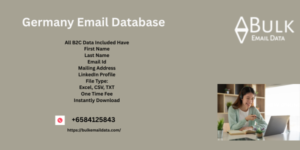BI tools help businesses not just analyze, but understand information. Their strength is in the visual: huge amounts of data are presented in the form of reports, graphs, and charts. This saves a lot of time and simplifies the work: now you don’t need to spend hours in Excel tables to analyze sales — in the BI service, data on profitable categories, average checks, and the number of customers will be displayed on one page.
Sounds perfect, but is it really that easy to implement BI? And do small companies even need BI tools, since
they also want clarity and clear analytics? Let's find out in the article.
BI (Business Intelligence) is software that Germany Email Database allows you to collect data from different sources, process it and present it in a visual form.
BI system interface using the Yandex DataLens service as an example. Visual reports summarize information from multiple sources
BI system interface using the Yandex
DataLens service as an example. Visual reports summarize information from multiple sources
BI = data collection → data analysis → data presentation in an understandable form
An example of BI at work. A marketer for a sportswear brand launched a campaign to promote a youth line. A month later, based on the campaign results, he went to the BI service. In the dashboards, he saw statistics on audience engagement in social networks, on conversion from contextual advertising, as well as data on advertising costs and direct sales. As a result, he realized that the strategy involving youth bloggers on VKontakte brought in more revenue.
What tasks do BI tools solve?
Allows you to process huge amounts of information. BI tools are used to analyze data from various areas: production, logistics, marketing, sales, personnel, clients. And from a variety of sources: from ERP to CRM systems. The result is extensive data arrays that become the basis for analytics.
Example: Toyota uses BI to analyze Purchase Email Leads production line data, supply chain statistics, and customer feedback channels. This information helps draw conclusions about product life cycles, inventory levels, and defects, and as a result, improve processes.
Help make decisions. BI tools allow executives and managers to identify problem areas in the strategy and find growth points. As a result, decisions become more justified. Both global ones, such as entering a new market, and local ones, such as purchasing additional equipment.
Example: Netflix uses BI to track user preferences. This way, the company understands which movies and TV shows are watched most often, how much time users spend on the site, which genres they like most, when and how often they visit the platform. This information tells Netflix what original content to release and what should not be released.
Working with customer data
correctly doesn't just let you know what customers will like most at the moment. It helps you scale your business. Read more about how this happens in the article . There are also more details about the Netflix case.
Make forecasts more realistic . Based on previous data from BI systems, a company can more accurately predict what will happen next. For example, how sales will grow in the new season, how demand will change after the end of the promotion, which advertising channel will bring greater conversion.
Example: General Electric uses BI to predict equipment failures. This helps reduce downtime, lower maintenance costs, and improve overall productivity.

Comments on “The Benefits of Visualization: How BI Tools Help Business”